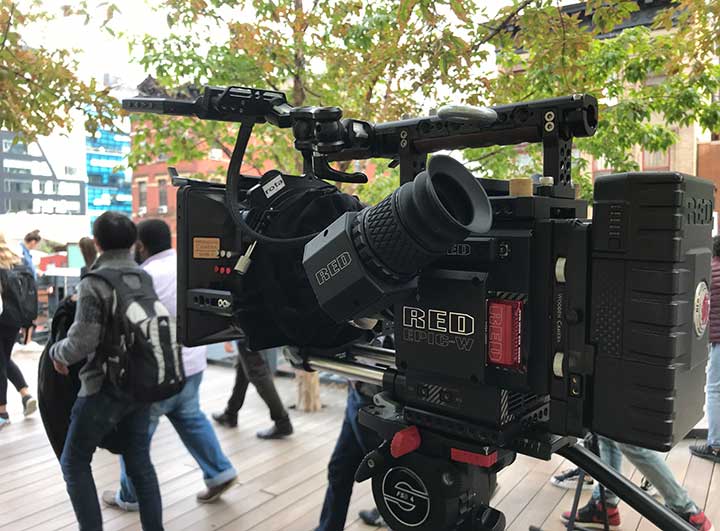I started filming on DSMC2 Red Digital Cinema cameras about three years ago. The learning curve was not easy, but I was fueled with so much excitement the challenge became part of the fun.
I was taught many years ago to continue to build your visual library. Meaning, to always watch new content and to continue to push yourself as a photographer and or cinematographer.
Many of the short films and documentaries that have inspired me were filmed on Red sensors, and personally I found the visuals to be breathtaking. I wanted to learn and continue to grow in my trade, ultimately creating better visuals to enhance the story for the viewer.
You can make great visuals with any camera, no question. However, if the camera operator isn’t excited about the tool they are holding, the intimacy of the image and ability to connect with the subject will suffer.
Personally I was, and still am, excited about RED.
Color and Exposure:
Picking up a Red camera takes me back so many years. It reminds me of the beginning when I fell in love with photography. The days when film was it and nothing more.
It has a look to it that doesn’t feel like a digital camera. There is a texture to the footage and digital noise looks more like film grain.
It has the ability to capture details in highlights and shadows that surpass many other cameras as well. It is measured in dynamic range, and given a number, 15 stops, 16.5 stops, etc. It refers to F-stops and the ability of the camera to capture a wide range of details. The Red Monstro is rated at 17+ stops of dynamic range, the Helium is at 16.5 stops. Other cameras, such as the Sony FS7, which is a great camera, is rated at 14 stops of dynamic range. Although this range isn’t infinite on the Red, it’s certainly greater than many other cameras.
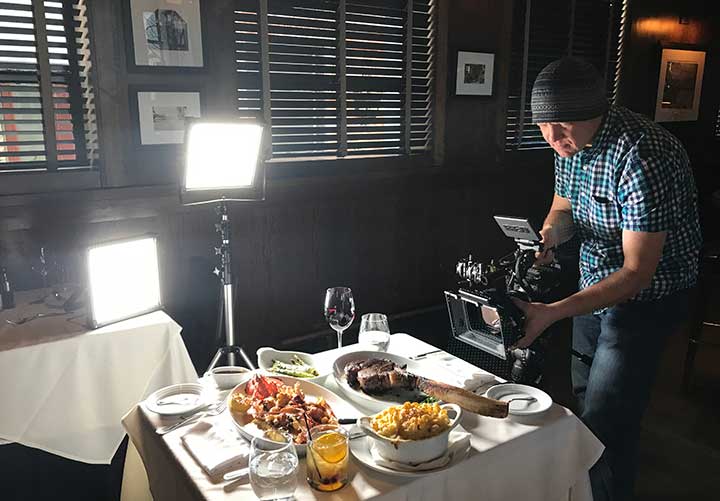
The camera captures what I see as a person, more so than any other camera I have used. Skin tones are far more accurate and the range of details are huge. Red Color Science, they call it. Works for me and I’m happy as a clam.
When you are recording, you can film in a ProRes or Avid codec and a raw format simultaneously. The raw format is called REDCODE Raw, which records a R3D file. These files are native to Red, and can be adjusted in their software, Redcine-X Pro and other supporting programs like Davinci Resolve Studio. The true beauty of raw is that the video footage can be changed easily! Exposure, white balance, saturation and hue are all adjustable. It’s all metadata, which is a massive advantage. If your exposure isn’t correct, or what you like, it can be tweaked on the back end then exported again.
Whoa!
This was all new to me, being able to adjust video footage in a raw format. I have been able to shoot raw files as a still photographer for years, this saved me so many times. Now I have the same safety net with video as well.
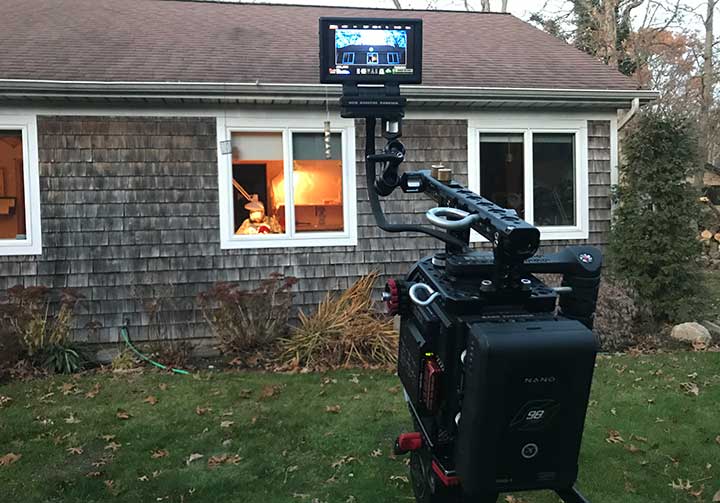
Keep in mind that color correcting a ProRes file compared to changing the color of a raw video file are two very different things.
With color correction of a ProRes file, you are adding color, tweaking contrast and sometimes adjusting exposure. All of these things when pushed too far can squash details in your footage. With a raw file, REDCODE raw, the latitude of adjustment and image detail retention is drastically greater.
Instead of adding or removing information to a ProRes file for example, you can change the metadata of the raw file, then re-export it as a ProRes file for editing in Adobe Premiere. With raw, massive color shifts and exposure can be achieved. This is super advantageous when color grading in Davinci Resolve and also fixing mistakes from the field.
Modular System:
Most cameras are purchased, you slap on a lens and battery. Insert a media card and roll camera.
Not so with Red.
You first choose the Red brain you desire, which is the black box in the center of the entire system. The current DSMC2 line of camera brains all differ slightly, with variances in sensor size, record frame rates and more. Monstro, Helium 8k, Gemini and Dragon-X are the current line up for sensor choices. You can choose them in the standard brain or as a complete system with their Red Ranger line of cameras.
The cameras come with a Standard OLPF, optical low-pass filter. This filter sits between the lens and the sensor, protecting the sensor from dust, IR light, and helps to filter light that’s most ideal for this camera. You can swap the filter for a Skin Tone-Highlight OLPF, Low Light Optimized OLPF, and also a H2O OLPF. Each of these shift the dynamic range or correct for underwater cinematography.
From there you choose a lens mount for PL, Canon, Nikon, and Leica. This plate can be swapped easily with four screws and many users have multiple plates depending on the lenses they own or rent.
Modulus are added to the rear of the camera, that allow users to choose from V-Mount batteries or gold mount for power. The Production Module supports XLR Phantom power microphones and has many other options. You can choose a smaller and more simplistic module with their Base Expander, V-Lock i/o Expander and even the Jetpack-SDI which is designed for powering the camera while on a gimbal or drone.
There are several handles and displays to choose from as well. Ultra-Bright, 4.7 and 7” touch LCDs can all be mounted to the top of the camera or operated from a designated cable.

What’s the point? Well, you can build the camera however you desire. In some cases building the camera up with a large module with many accessories is needed for the shoot. In other cases, you build it super small. It’s modular, which is a massive advantage. I carry a set of tools in my case. So I can move monitors around or swap out accessories on the fly.
One of the biggest advantages to this system is that the sensor on the brain can be upgraded. One may own a Raven, Scarlet-W, or Dragon camera, and there are sensor upgrade options, instead of replacing the entire camera.
Why choose 8k:
“Resolution matters”, as written on red.com
With over 900hrs of runtime of my Red Epic-W 8k, I agree fully.
Recording in 8K is 17x greater resolution than HD. This allows one to export still frames from the raw video that are stunning. In some cases fashion shoots for national magazines like GQ, Vogue and Esquire are using red cameras to record motion. Then with hundreds of frames of raw video to choose from, a still is exported for print.
Another reason to enjoy having super high resolution, is that there is more to work with on the video timeline. Let’s say that the final video will be high definition at 1920×1080. Having 8k footage allows the editor to push or zoom into areas of the file with very limited degradation. This ability does not replace long glass, or moving the camera to change perspective, but it gives the editor more to work with as a creative.
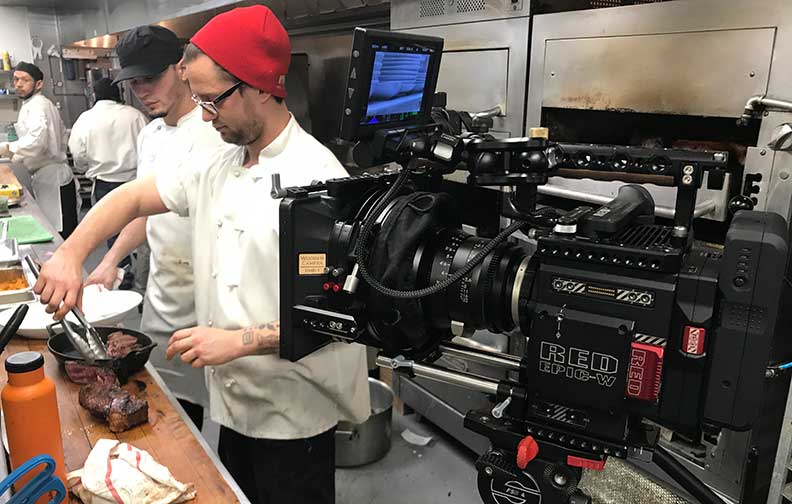
Working in tiny teams, or alone, I can’t drag in dozens of lights to make a scene look like a Hollywood blockbuster. It’s just not possible. When you are filming in low light or with limited artificial lights because of the resources I have, the high resolution helps a ton. Having more resolution to work with, then down-sampling to a lower resolution, helps reduce imperfections of the scene recorded. Going from 8k to HD in the down-sample process has incredible advantages.
Red camera community:
When I started down this road I honestly didn’t understand the camera. It was very complicated. The learning curve is steep and although you can turn it on and hit record, it certainly doesn’t mean your footage will look good.
I didn’t know how to expose with a histogram, I didn’t truly understand red compression ratios, round trip workflow was a challenge, file management, navigating the menus and understanding all the possible functions of this cinema camera was overwhelming.
A REDucation workshop and the REDUSER.net community was and still is, incredibly supportive. For anyone who first dives into this world, I highly recommend the three day workshop. It’s a ton of information to get you started. From there, film with the camera as much as possible and ask questions on REDUSER.net. The folks at Red.com are super knowledgeable and supportive as well.
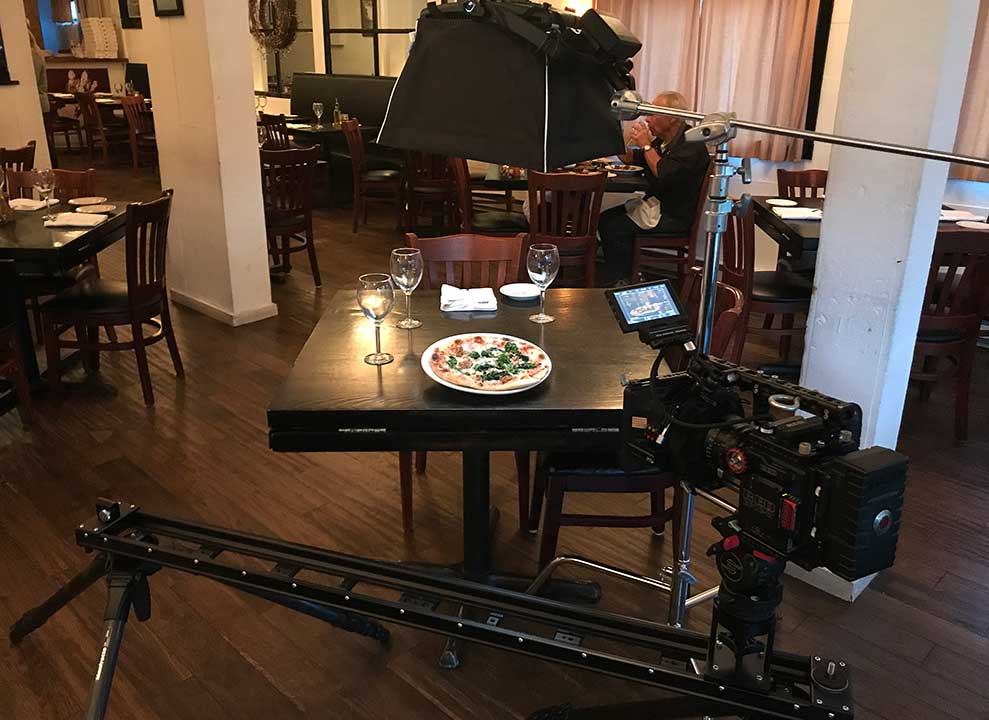
The online community is friendly, professional, enthusiastic and inspiring, made up of many veterans and newbies who want to learn and grow. You can ask questions, share your work, buy/sell equipment and read about the latest tech. It’s great and I have to say I’ve learned so much from these folks and I’m thankful for it. Without each of these, I wouldn’t be where I am today.
Is this camera for everyone:
Plain and simple, no.
First of all, it’s very very expensive. For example, the camera takes proprietary media. A 480gb Red mini-mag sells for $1450, and you get only one!
To build an entire system, camera and accessories, media, batteries, you will be out a good 30k. Unfortunately, most people simply can’t afford it.
The camera also has to be booted up, like a computer, so don’t plan on chasing news with this gear. Although, who would anyway? It wasn’t designed for that.
It also can be quirky. Sometimes it can lock up, and you need to reboot the camera. In other situations if you don’t have the camera set up properly for the temperature of the room you are in, the fans will run like crazy.
Also, firmware updates can leave third party accessories lifeless. When Red updated their system from ipp to ipp2 (image processing pipeline), the third party Wooden Camera Cableless V-Mount power plate I was using left the camera crippled. Wooden Camera is an amazing company, they jumped and fixed the problem quickly sending me and other users a new circuit board to fix the module for free. It got fixed, but there’s a process to keeping the camera maintained and up to date.
Now that being said, their DSMC2 (digital system management camera) has come a long way since Red One, which was their first camera. These days Red is pretty darn solid. I started filming with a Red Epic-W DSMC2, and I am super happy.
Having the latitude of a raw video file, especially if you are interested in color grading with Davinci Resolve Studio, is amazing. With the high speed frame rates that Red is known for, plus the dynamic range, one can achieve the look that is awesome.
When I have the camera dialed in, I’m beyond stoked. It’s amazing. Although I wouldn’t bring it to every assignment I shoot, there are many projects where this tool is the best choice for me.
So if you want to jump into this world, it will take time to learn all the ins and outs of the system. At times, firmware updates could be a challenge. Don’t plan on turning this camera on and making a movie out of the gate. You will need to invest yourself, but in the end I feel it’s well worth it.

